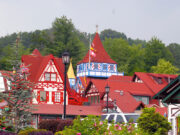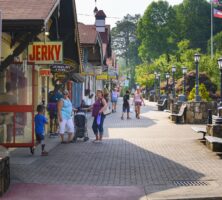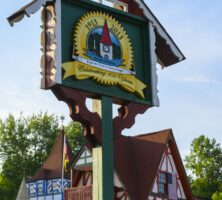Helen is a small community in the heart of Georgia’s Blue Ridge Mountains. In the late 1960s its residents transformed this economically depressed town, long since abandoned by the timber industry that had created it, into a Bavarian village of shops and restaurants that is now the third most popular tourist destination in the state; only Atlanta and Savannah attract more visitors annually.
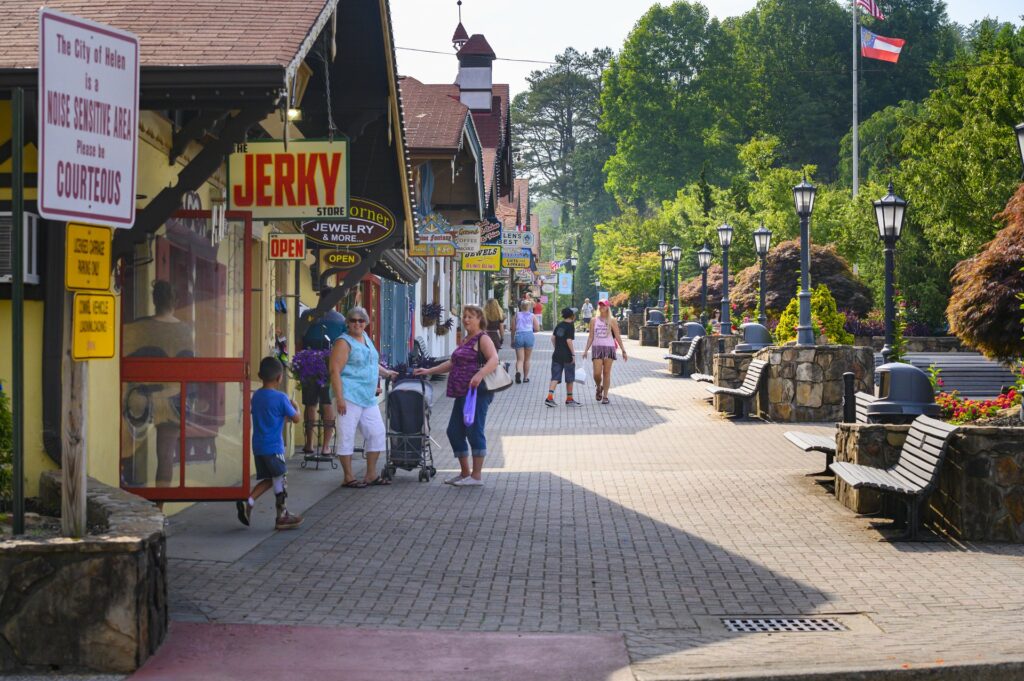
Courtesy of Explore Georgia.
Located on the headwaters of the Chattahoochee River at the edge of the Nacoochee Valley in White County, Helen is about sixty miles north of Athens. It emerged in the early twentieth century in what had been, a century earlier, the heart of both Cherokee and gold mining country. The Byrd-Matthews Corporation, a timber company attracted by the area’s vast virgin hardwood trees, established a major sawmill there around 1910. Shortly afterward a railroad connector linked the new town—named Helen after the daughter of a Byrd-Matthews partner—to Gainesville in the foothills to the south. The operation thrived until the Great Depression, when most of the timber had been cut and the company and most residents moved on to more promising forests elsewhere. By the 1950s and 1960s the town was nothing more than a bleak row of concrete block structures and supported only nine businesses.
In 1968 a group of local businessmen met for what has become a legendary lunch. In seeking to stop some of the considerable traffic that moved through Helen on the way to the mountains and waterfalls beyond, they came upon the idea of sprucing up their storefronts. They consulted John Kollock, a prominent regional artist in nearby Clarkesville. Inspired by his 1950s military service in southern Germany, he suggested that they transform their business district into a Bavarian village and presented them with a series of watercolors suggesting what the town could become. Led by Pete Hodkinson, local merchants rallied. By 1972 Kollock’s paintings had taken tangible form, and a trickle of curious visitors soon became a flood.
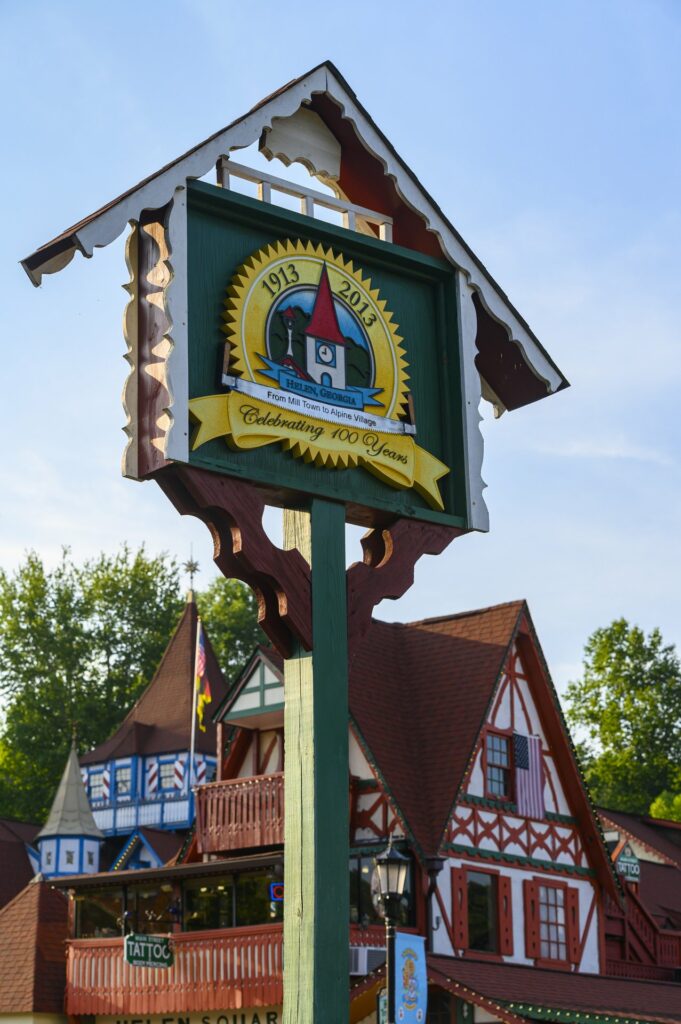
Courtesy of Explore Georgia.
Hodkinson, as much a visionary as an entrepreneur, infused the enterprise with as much a spirit of fun as of place. He drew crowds to Helen throughout the year by staging hot-air balloon races, motorcycle races, Easter olive hunts, and what remains the biggest annual event, a three-month-long Oktoberfest. (Hodkinson was killed in a balloon accident in 1976.) Nearby Anna Ruby Falls, Unicoi State Park, and other natural attractions contribute to Helen’s appeal, as does the Chattahoochee River, which flows through the middle of town and draws tubers and fishermen as well as shoppers to the community.
Wine-making is a growing industry in the area, and Habersham Vineyards and Winery, one of the state’s oldest wineries, is in Helen.
In 2000 Helen’s residents numbered only 430, and yet the town supports more than 150 shops, 30 factory outlets, about 40 restaurants, and nearly 1,200 hotel rooms. Most buildings still display chalet façades and red roofs, sales clerks still wear lederhosen and dirndls, and several restaurants still serve wiener schnitzel and sauerbraten. Many question Helen’s rampant commercialism and its failure to focus more attention on its own Appalachian history and culture, rather than that of the German Alps. Yet, on its own terms, it is hard to deny its economic success. In recent years Helen has attracted as many as 1.5 million tourists a year, who spend more than $100 million annually in White County.


